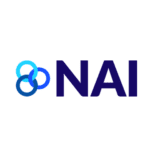Why are Key KPIs and Data Points important for Nonprofits?
Nonprofit organizations play a vital role in creating positive social change, and successful fundraising is crucial for their sustainability and impact. To maximize their fundraising efforts, nonprofits need to embrace data-driven decision-making and monitor key performance indicators (KPIs) and data points that drive success. In this blog, we will explore essential KPIs and data points that nonprofits should focus on to enhance their fundraising strategies.
Step One: Basic KPI Planning
To thrive in the competitive fundraising landscape, nonprofits must embrace data-driven practices and monitor key KPIs and data points. By consistently tracking and analyzing these metrics, organizations can identify areas for improvement, optimize their fundraising strategies, and maximize their impact. Remember, every data point tells a story and provides an opportunity to connect more deeply with supporters, ultimately increasing fundraising success for nonprofits.
Donor Acquisition Rate
The donor acquisition rate measures the number of new donors acquired over a specific period. Tracking this KPI helps nonprofits evaluate the effectiveness of their marketing and outreach efforts. By monitoring the donor acquisition rate, organizations can identify which campaigns or channels yield the best results and optimize their acquisition strategies accordingly.
Donor Retention Rate
Donor retention rate indicates the percentage of donors who continue to support the organization over time. It is more cost-effective to retain existing donors than to acquire new ones. By calculating the donor retention rate, nonprofits can assess their donor stewardship efforts and identify areas for improvement. Implementing retention strategies, such as personalized communication and demonstrating impact, can enhance donor loyalty.
Average Gift Size
The average gift size reveals the average amount contributed by individual donors. Tracking this data point helps nonprofits understand the giving patterns and preferences of their supporters. By segmenting donors based on their giving levels, organizations can tailor their fundraising appeals to each segment, potentially increasing the average gift size.
Cost Per Dollar Raised (CPDR)
CPDR measures the efficiency of fundraising efforts by calculating the cost incurred to raise each dollar. Lower CPDR indicates higher fundraising efficiency. Nonprofits should track this KPI to identify cost-effective fundraising channels and campaigns. By optimizing their resources and focusing on activities with low CPDR, organizations can maximize the impact of their fundraising initiatives.
Return on Investment (ROI)
ROI assesses the effectiveness of fundraising activities by comparing the funds raised to the resources invested. It helps nonprofits determine which fundraising initiatives generate the most significant returns. By analyzing ROI, organizations can make informed decisions about resource allocation, prioritize high-yield activities, and optimize their fundraising strategies for maximum impact.
Website Traffic and Conversion Rate
A nonprofit’s website serves as a crucial touchpoint for donors and supporters. Monitoring website traffic and conversion rate provides valuable insights into the effectiveness of online fundraising efforts. By tracking these metrics, nonprofits can identify popular pages, optimize user experience, and implement conversion rate optimization techniques to convert website visitors into donors.
Social Media Engagement
In today’s digital age, social media platforms offer powerful tools for nonprofits to engage with their supporters. Tracking social media engagement metrics such as likes, comments, shares, and followers provides valuable insights into the effectiveness of communication and engagement strategies. Nonprofits can leverage this data to refine their content, identify trends, and nurture a strong online community.
Step Two: Using Intersect’s Platforms
After planning broad KPIs, it is possible to drill down more precise measures; ones that Intersect has already integrated as part of the universal dashboard for multiple services; Insights, GEO, and DToC.
Donor Behavior
Nonprofits can analyze the behavior of potential donors to identify those who regularly donate to nonprofits, religious organizations, or political parties. By targeting these individuals, nonprofits can tailor their fundraising appeals to appeal to their giving habits and motivations.
Financial
Understanding the financial situation of potential donors can help nonprofits customize their fundraising strategies. By identifying individuals who recently applied for credit cards or loans, nonprofits can target them with specific fundraising campaigns or opportunities for sponsorship.
Interests
Knowing the interests and hobbies of potential donors can help nonprofits tailor their fundraising efforts. By aligning the fundraising cause with the interests of the individuals, nonprofits can create targeted appeals that resonate with their passions and increase the likelihood of donations.
Occupations
Nonprofits can consider the occupations of potential donors to create specialized fundraising initiatives. For example, if an individual works in a particular industry, the nonprofit can highlight how their cause aligns with the values and mission of that industry, thus encouraging donations from professionals in that field.
Reading
Understanding the reading preferences of potential donors can provide insights into their personal interests and values. Nonprofits can use this information to craft fundraising messages that connect with the individual’s preferred genres. For instance, if someone enjoys nonfiction books on social issues, a nonprofit addressing those issues can use relevant storytelling to engage the potential donor.
Social
Nonprofits can explore the social media profiles of potential donors to gain insights into their networks and connections. By identifying individuals with significant online influence or a large following, nonprofits can reach out to them and propose partnership opportunities to increase their fundraising reach.
Demographic
While demographics may be commonly collected, they can still be valuable for targeting fundraising efforts. Nonprofits can analyze the age, race, gender, and other demographic information of potential donors to personalize their fundraising appeals and connect with specific segments of the population that may be more inclined to donate.




